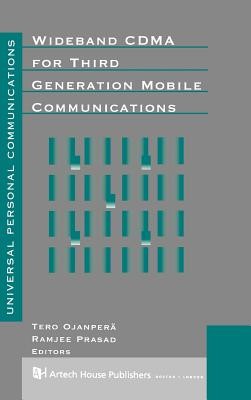
- We will send in 10–14 business days.
- Publisher: Artech House Publishers
- ISBN-10: 089006735X
- ISBN-13: 9780890067352
- Format: 16.1 x 23.7 x 3 cm, hardcover
- Language: English
- SAVE -10% with code: EXTRA
Wideband CDMA for Third Generation Mobile Communications (e-book) (used book) | bookbook.eu
Reviews
Description
This text evaluates wideband CDMA as an effective third generation technology option, giving a picture of the various wideband CDMA standardization activities underway worldwide in the late 1990s. The book compares a range of CDMA design techniques and examines how each affects system performance. It also describes how third generation system applications will impact radio access system design and compares and contrasts each major wideband CDMA standardization proposal currently on the table, including FRAMES wideband CDMA in Europe, Core-A in Japan, wideband IS-95 in the US, and wideband CDMA in Korea. It identifies and describes various air interface access schemes for third and fourth generation mobile communications systems; analyzes wideband CDMA performance in varying radio environments; and discusses the integration of the GSM core network with wideband CDMA.
EXTRA 10 % discount with code: EXTRA
The promotion ends in 19d.17:56:42
The discount code is valid when purchasing from 10 €. Discounts do not stack.
- Publisher: Artech House Publishers
- ISBN-10: 089006735X
- ISBN-13: 9780890067352
- Format: 16.1 x 23.7 x 3 cm, hardcover
- Language: English English
This text evaluates wideband CDMA as an effective third generation technology option, giving a picture of the various wideband CDMA standardization activities underway worldwide in the late 1990s. The book compares a range of CDMA design techniques and examines how each affects system performance. It also describes how third generation system applications will impact radio access system design and compares and contrasts each major wideband CDMA standardization proposal currently on the table, including FRAMES wideband CDMA in Europe, Core-A in Japan, wideband IS-95 in the US, and wideband CDMA in Korea. It identifies and describes various air interface access schemes for third and fourth generation mobile communications systems; analyzes wideband CDMA performance in varying radio environments; and discusses the integration of the GSM core network with wideband CDMA.


Reviews